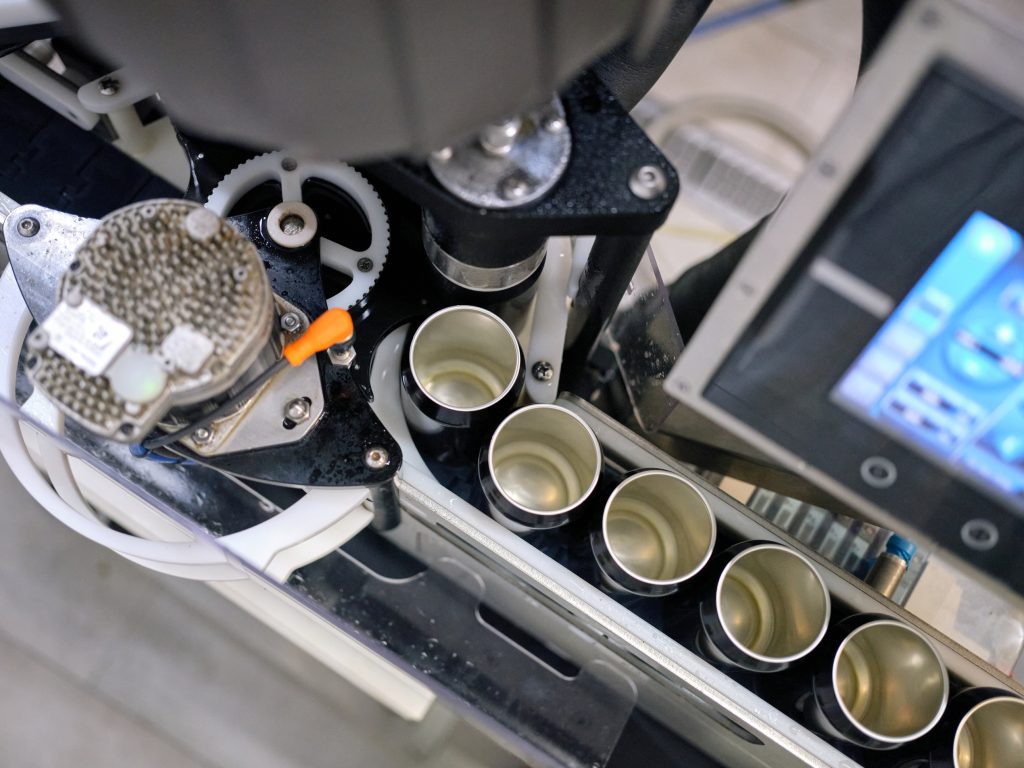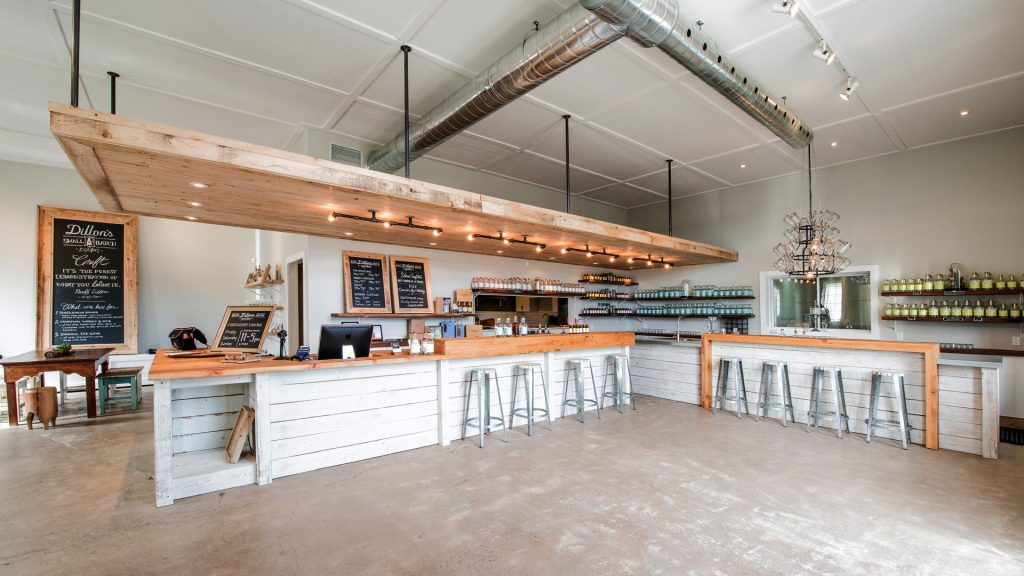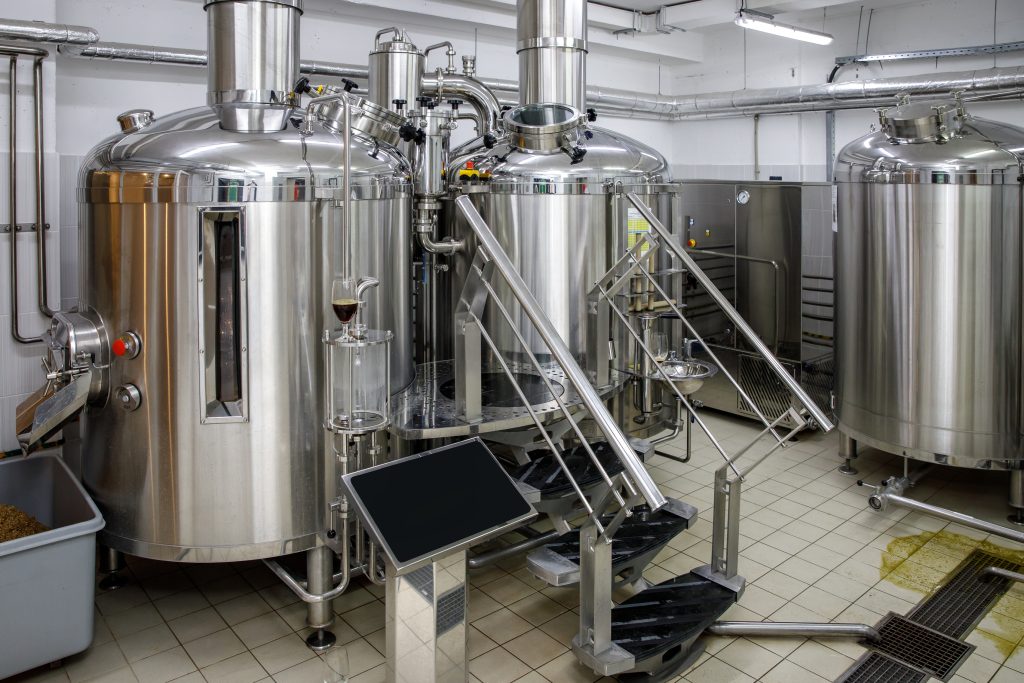
By: Becky Garrison
The word aquavit derives from the Latin word aqua vitae meaning “water of life,” a testament to the belief held by early distillers that alcohol infused with herbs was a healing spirit. Also known as aquavite, akvavit, akevitt or snaps, this national spirit of Sweden, Norway and Denmark represents an integral part of Scandinavian culture.
A typical Nordic household has a bottle of aquavit in the refrigerator or freezer, which is brought out during festive gatherings like Christmas and Midsummer celebrations. Also, aquavit functions as a digestif in helping to digest rich food.
Traditionally, Scandinavians shout skol (also skål) while maintaining eye contact as they down a shot of aquavit. Supposedly, this custom stems from the Viking sensibility of keeping one’s eye on others, even during a celebration to avoid potential threats. As a testament to aquavit’s celebratory role, the Historical Museum of Wine & Spirits in Stockholm, Sweden, currently lists over 200 drinking songs dedicated to aquavit, with new ones created each year.
Families without means often made aquavit at home, similar to distilling Prohibition-era gin in the United States. While these homemade brews tended to leave a very bitter aftertaste, aquavits produced by licensed distillers elevated this spirit considerably.
Commercially produced aquavit tends to range in ABV from 40 to 45 percent, with most aquavit classified as Taffel Aquavit. This term refers to aquavit that is either entirely unaged or aged in spent casks that impart nearly no character. Aquavit found in other parts of Scandinavia use a base consisting of clear, grain-neutral spirits, though Norwegians often distill theirs with potatoes as a base. Also, Norwegian aquavit is usually aged in barrels.
The Birth of Aquavit Distilled in the United States
Until recently, Scandinavians in the United States wishing to replicate these Nordic traditions had to rely on imported aquavit. The most popular imports available in the United States were Aalborg (Denmark), Linie (Norway) and O.P. Anderson (Sweden).
The first instance of aquavit produced in the United States can be traced to Christian Krogstad, founder of House Spirits and Westward Whiskey in Portland, Oregon. As his family is Norwegian, he grew up with the foods and drinks of Norway and a particular fondness for aquavit. As Krogstad reflects, “The caraway in aquavit is particularly good as a palate-cleanser if you have oily fish, like mackerel or pickled herring.”
Since aquavit is such a niche category, Krogstad focused his efforts on distilling gin while waiting for his American single malt whiskey to mature. However, distribution issues in 2006 prevented aquavit from being imported to the U.S. in time for the holiday season. So, he decided to produce some aquavit, which he made using a neutral corn spirit. He then maturated the botanicals and redistilled it.
His aquavit was kept at the distillery for marketing uses with no intention of selling or distributing this spirit commercially. But he discovered that whenever “cool kid” bartenders visited the distillery and sampled the aquavit, they indicated an interest in using this spirit at their bars.
So in 2007, he made a label for his aquavit and started selling Krogstad Aquavit. Even though House Spirits took a minority investment in Westward Whiskey from Diageo, he still retains full ownership of his aquavit. Recently, he added Krogstad Gamle Aquavit, barrel-aged in French oak pinot noir barrels from various Oregon wineries. Currently, this is available in about 42 states and online, with approximately 1,000 nine-liter cases sold per year.
The Growth of U.S.-Based Aquavit
Initially, the TTB’s Distilled Spirits Beverage Alcohol Manual (BAM) specified that only spirits possessing the flavor of caraway could be labeled aquavit. After receiving correspondence from an aquavit producer, which explained that Norwegian law allows aquavit to retain the flavor of caraway, dill or both, they amended the entry for “aquavit” on pages 4-13 to read: “A caraway and/or dill flavored distilled spirits product.”
This loose definition has allowed for experimentation among distillers in producing an aquavit that maintains the Scandinavian character of the spirit but has characteristics unique to that particular distillery.
Aimsir Distilling Co. (Portland, OR)
According to co-founder Christine Hopkins, aquavit production emerged as their distiller’s passion project. “We learned a lot about aquavit together, and we got to try a bunch of aquavits, as my co-founder and husband, Steve, and I knew nothing about this specialty spirit.”
Their aquavit is made with the same neutral grain spirit used for their gin and vodka, which Hopkins describes as very caraway but balanced with fennel, star anise, a lot of citrus and a little bit of lavender. Most of their aquavit cocktails have been very summer-inspired, following the success of their Nordic Summer, a drink that includes aquavit, lime and Aperol.
Long Road Distillers (Grand Rapids, MI)
While most distillers purchase their neutral-grain spirit for their aquavit, co-owner Jon O’Connor proclaims they craft all their small batch spirits from scratch using local ingredients. Around 2015, they distilled about 100 pints of aquavit as a passion project. But after sending off a bottle to the Denver International Spirits Competition, where they tied for Best of Show with a $200 bottle of scotch, they felt they were on to something. “We just kept sending it off to these big spirits completions, and it just kept winning all these awards,” O’Connor states.
They use red winter wheat for their base spirits, adding a mixture of dill seed, fresh dill and caraway seeds along with curcumin, star anise, fennel and cinnamon. This recipe is also used in the Old Aquavit, which is barrel-aged in used whiskey barrels.
Norden Aquavit (Chelsea, MI)
As a bartender, Robyn Cleveland, co-founder and distiller, explored making cocktails using unique ingredients. He fell in love with aquavit through a Danish childhood friend and his wife, who is half-Swedish. Cleveland created a brand focused on aquavit’s rich traditions with approachability and versatility as a cocktail ingredient at the fore. Cleveland says, “Aquavit’s potential was relatively untested outside areas with larger Scandinavian strongholds. It’s exciting to share the spirit with an ever-growing audience.”
At 45 percent ABV, their citrus-forward flagship, Original Taffel Style, embraces both caraway and dill along with clementine, coriander, angelica, orris, juniper, clary sage, staghorn sumac and anise. Also, they produce an American Oak Reserve using the same botanicals that have been aged for a minimum of 12 months in previously used rye casks.
Spirits of French Lick (West Baden Springs, IN)
As a distiller and distillation historian, aquavit has always sparked head alchemist Alan Bishop’s interest. He opines, “Aquavit can trace its roots under various names back to the Aquavitae Treatises of the 1400s to1600s. It has deep connections to Sparagyic medicine, so three of my major interests were piqued: alchemy, history and complex botanical distillations.
Bishop notes they push coriander and caraway to the forefront of their aquavit, with a small amount of juniper and some floral and citrus elements. Their base distillate is a blend of both neutral and 100 percent oat whiskey spirits, which Bishop states provide mouthfeel, aroma and perceived sweetness.
Production of their Aquavit requires the production of three separate products. This involves high-proof corn ethanol and 100 percent oat whiskey, both taken through the full distillation steps. Then there is the blending, hand-mashing of various botanical elements, heat-up digestion period and 24-hour maceration. What follows is the distillation of the finished product and heavy cleaning of the equipment, which is shared with other products.
Tattersall Distilling (Minneapolis, MN)
When Tattersall Distilling began distilling in 2015, aquavit was one of the first spirits they made. “I have Swedish heritage, and my business partner has Norwegian heritage. So being up in Minnesota and given our backgrounds, we felt we had us an opportunity to make something unique that interested us,” Jon Kreidler, co-founder and chief officer, opines.
Their aquavit is caraway- and rye-forward with a base of organic, corn-based spirits. While Kreidler is aware some U.S. distillers use cumin in their aquavit, he discovered this use is due to a translation error from Swedish to English. Instead, he prefers to use 20 locally sourced botanicals, many of which are also present in their gin.
After customers expressed interest in their Tiki-style cocktails, they decided to bottle a coconut-infused version of their aquavit. “The citrus and pineapple create some very interesting notes when mixed with the caraway,” Kreidler notes.
Vikre Distillery (Duluth, MN)
As a Norwegian and American dual citizen, Emily Vikre grew up with a cultural understanding of aquavit as a celebratory spirit. Her aquavit starts with organic, Minnesota corn that she either distills herself or augments with Minnesota, organic spirits. Next, she combines direct and vapor infusions with 12 organic botanicals, including caraway. Also, she produces aged aquavit with used cognac casks. “These casks shift the flavors of how the botanical come through,” Vikre reflects.
Marketing Aquavit in the United States
According to distillers, the biggest challenge in marketing aquavit is that most consumers don’t know what aquavit is. When Hopkins markets aquavit at a farmer’s market and other public events, she educates potential consumers by calling it a Scandinavian-style gin. “Aquavit is very similar to gin, but the botanicals are different. As they already have the vocabulary for gin, using this descriptive term allows them to transition from gin to aquavit.”
Also, Vikre observes how some people think they won’t like aquavit as they don’t care for caraway or dill. This is especially true if they had a bad experience with an aquavit that was too caraway-forward. Cleveland adds that some Scandinavians need to be convinced that the poor quality aquavit of their youth does not represent the craft aquavit on the market today.
Vikre classifies her customers into two types. First are the people who wear Norwegian sweaters and celebrate the Scandinavian holidays. The number of people who fit this description varies according to the number of Scandinavians living in that particular region.
The second group is a growing collection of consumers interested in pushing the boundaries of craft cocktails. Within the cocktail culture, aquavit is emerging as a substitute for gin or vodka by those bartenders looking to offer a unique drink to their clientele. In particular, the caraway lends a tangy bite to a bloody Mary. Other cocktail recipes referenced by these distillers that can be made with aquavit include aquavit and tonic, banana daiquiri, dirty martini, eggnog, gimlet, julep with rye whiskey, mai tai, Manhattan, negroni, old fashioned and Tom Collins.
Select Scandinavian festivals held across the country from New Jersey to Portland, Oregon offer opportunities to embrace the Nordic culture. While some festivals are alcohol-free, others, like ScanFair held this year on December 11 and 12, 2022 in Portland, Oregon, include aquavit among their festive offerings. Shawn MacArthur, festival and fundraising events manager, opines, “Having aquavit at ScanFair is one of the many ways attendees can get a taste of a Nordic Christmas market! Along with food, shopping and activities, it’s the perfect way to kick off the holidays.”
Also, in 2012, Jacob Grier, co-author of Raising the Bar (Chronicle Books, November 2022), hosted Aquavit Week at Metrovino in Portland, where he served as the bar manager. He wanted to share his enthusiasm for the spirit and highlight its use in cocktails. Since then, it has grown into an annual tradition, with a range of citywide events and an opening party featuring a wide selection of aquavit, aquavit cocktails and Scandinavian fare hosted by Broder, a Portland-based Swedish restaurant. As the state opens up post-COVID, Grier hopes to relaunch Aquavit Week in January or February 2023.







